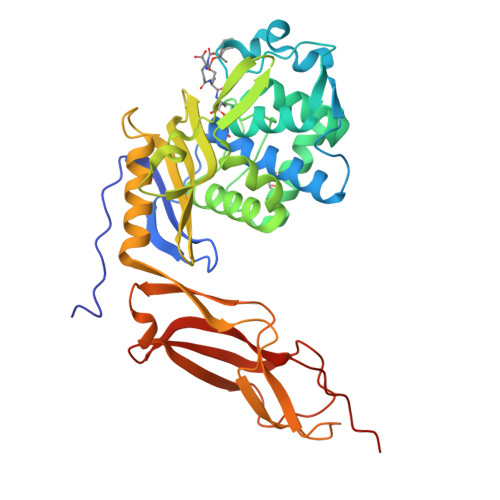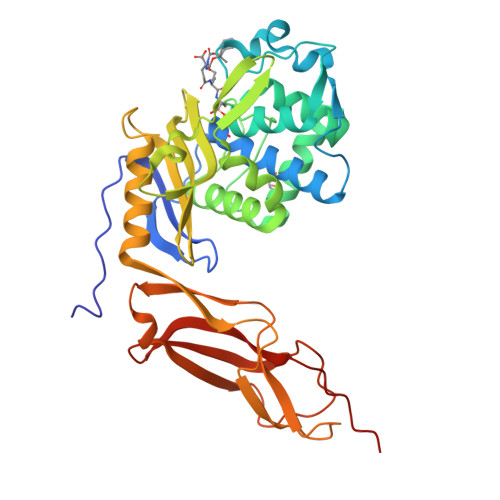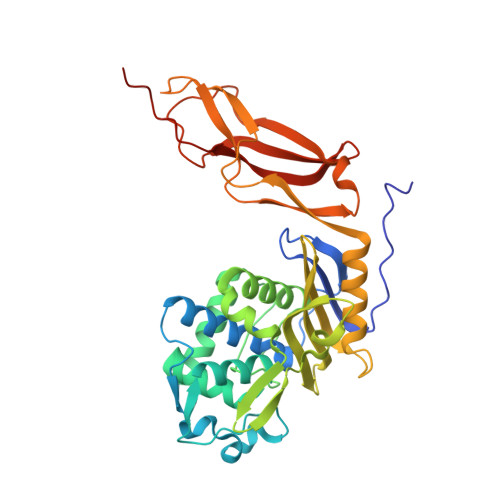Crystal Structure of Escherichia coli Penicillin-Binding Protein 5 Bound to a Tripeptide Boronic Acid Inhibitor: A Role for Ser-110 in Deacylation.
Nicola, G., Peddi, S., Stefanova, M., Nicholas, R.A., Gutheil, W.G., Davies, C.(2005) Biochemistry 44: 8207-8217
- PubMed: 15938610
- DOI: https://doi.org/10.1021/bi0473004
- Primary Citation of Related Structures:
1Z6F - PubMed Abstract:
Penicillin-binding protein 5 (PBP 5) from Escherichia coli is a well-characterized d-alanine carboxypeptidase that serves as a prototypical enzyme to elucidate the structure, function, and catalytic mechanism of PBPs. A comprehensive understanding of the catalytic mechanism underlying d-alanine carboxypeptidation and antibiotic binding has proven elusive. In this study, we report the crystal structure at 1.6 A resolution of PBP 5 in complex with a substrate-like peptide boronic acid, which was designed to resemble the transition-state intermediate during the deacylation step of the enzyme-catalyzed reaction with peptide substrates. In the structure of the complex, the boron atom is covalently attached to Ser-44, which in turn is within hydrogen-bonding distance to Lys-47. This arrangement further supports the assignment of Lys-47 as the general base that activates Ser-44 during acylation. One of the two hydroxyls in the boronyl center (O2) is held by the oxyanion hole comprising the amides of Ser-44 and His-216, while the other hydroxyl (O3), which is analogous to the nucleophilic water for hydrolysis of the acyl-enzyme intermediate, is solvated by a water molecule that bridges to Ser-110. Lys-47 is not well-positioned to act as the catalytic base in the deacylation reaction. Instead, these data suggest a mechanism of catalysis for deacylation that uses a hydrogen-bonding network, involving Lys-213, Ser-110, and a bridging water molecule, to polarize the hydrolytic water molecule.
Organizational Affiliation:
Department of Biochemistry, Medical University of South Carolina, Charleston, South Carolina 29425, USA.




















